1958 Alfa Romeo Giulietta Spider Normale - Solid Original Car!
- Price:
- Location: Indianapolis, Indiana, United States
- Condition: Used
- Make: Alfa Romeo
- Model: Other
- Type: Convertible
- Trim: Giulietta Spider Normale
- Year: 1958
- Mileage: 79,685
- Color: Red
- Engine size: 4 cylinder
- Number of cylinders: 4
- Transmission: Manual
- Drive type: 4 Speed
- Interior color: Black
- Options: Convertible, Leather Seats
- Vehicle Title: Clear
1958 Alfa Romeo Other Giulietta Spider Normale Description
View our eBay StoreSign up for our Email Newsletter1958 Alfa Romeo Giulietta Spider Normale Offered as a reserve auction.
This very nice largely original car was found in the Midwest, and is an excellent almost entirely rust free example-I found one small hole in the right front wheel well while working on the brakes. The car appears completely original with a respray in the original color. The car needs recommissioned to be fully road ready, most notably the brakes need redone. Many new parts have been sourced and go with the car. It does run. Further cosmetic work will result in a very nice car that is a blast to drive and will be most welcomed on the Concourse circuit. This is a car I fully expected to just keep in my collection, but I have too many projects and need to pass it on to a new owner.
We have many more photographs of this car, please click on any image to be taken to our full-size image list!
The company that became Alfa Romeo was founded as Società Anonima Italiana Darracq (SAID) in 1906 by the French automobile firm of Alexandre Darracq, with some Italian investors. One of them, Cavaliere Ugo Stella, an aristocrat from Milan, became chairman of the SAID in 1909. The firm's initial location was in Naples, but even before the construction of the planned factory had started, Darracq decided late 1906 that Milan would be a more suitable location and accordingly a tract of land was acquired in the Milan suburb of Portello, where a new factory of 6,700 square metres was erected. Late 1909, the Italian Darracq cars were selling slowly and Stella, with the other Italian co-investors, founded a new company named A.L.F.A. (Anonima Lombarda Fabbrica Automobili), initially still in partnership with Darracq. The first non-Darracq car produced by company was the 1910 24 HP, designed by Giuseppe Merosi, hired in 1909 for designing new cars more suitable to the Italian market. Merosi would go on to design a series of new A.L.F.A. cars with more powerful engines. A.L.F.A. also ventured into motor racing, drivers Franchini and Ronzoni competing in the 1911 Targa Florio with two 24 HP models. In 1914, an advanced Grand Prix car was designed and built, the GP1914 which featured a four cylinder, double overhead camshafts, four valves per cylinder and twin ignition. However, the onset of World War I halted automobile production at ALFA for three years.
In August 1915 the company came under the direction of Neapolitan entrepreneur Nicola Romeo, who converted the factory to produce military hardware for the Italian and Allied war efforts. Munitions, aircraft engines and other components, compressors and generators based on the company's existing car engines were produced in a vastly enlarged factory during the war. When the war was over, Romeo invested his war profits in acquiring locomotive and railways carriage plants in Saronno (Costruzioni Meccaniche di Saronno), Rome (Officine Meccaniche di Roma) and Naples (Officine Ferroviarie Meridionali), which were added to his A.L.F.A. ownership. Car production had not been considered at first, but resumed in 1919 since parts for the completion of 105 cars were still lying at the A.L.F.A. factory since 1915. In 1920, the name of the company was changed to Alfa Romeo with the Torpedo 20-30 HP becoming the first car to be badged as such.Their first success came in 1920 when Giuseppe Campari won at Mugello and continued with second place in the Targa Florio driven by Enzo Ferrari. Giuseppe Merosi continued as head designer, and the company continued to produce solid road cars as well as successful race cars (including the 40-60 HP and the RL Targa Florio).
In 1923 Vittorio Jano was lured away from Fiat, partly thanks to the persuasion of a young Alfa racing driver named Enzo Ferrari, to replace Merosi as chief designer at Alfa Romeo. The first Alfa Romeo under Jano was the P2 Grand Prix car, which won Alfa Romeo the inaugural world championship for Grand Prix cars in 1925. For Alfa road cars Jano developed a series of small-to-medium-displacement 4, 6, and 8 cylinder inline power plants based on the P2 unit that established the classic architecture of Alfa engines, with light alloy construction, hemispherical combustion chambers, centrally-located plugs, two rows of overhead valves per cylinder bank and dual overhead cams. Jano's designs proved to be both reliable and powerful.
Enzo Ferrari proved to be a better team manager than driver, and when the factory team was privatised, it then became Scuderia Ferrari. When Ferrari left Alfa Romeo, he went on to build his own cars. Tazio Nuvolari often drove for Alfa, winning many races prior to World War II.
In 1928 Nicola Romeo left, with Alfa going broke after defense contracts ended, and in the end of 1932 Alfa Romeo was rescued by the government, which then had effective control. Alfa became an instrument of Mussolini's Italy, a national emblem. During this period Alfa Romeo built bespoke vehicles for the wealthy, with the bodies normally built by Touring of Milan or Pininfarina. This was the era that peaked with the legendary Alfa Romeo 2900B Type 35 racers.
The Alfa factory (converted during wartime to the production of Macchi C.202 Folgore engines) was bombed during World War II, and struggled to return to profitability after the war. The luxury vehicles were out. Smaller mass-produced vehicles began to be produced in Alfa's factories beginning with the 1954 model year, with the introduction of the Giulietta series.
The Alfa Romeo Giulietta (series 750 and 101) wasmanufactured from 1954 to 1965. The first Giulietta model was a coupé, the Giulietta Sprint, introduced in late 1954. This was followed by a sedan in spring 1955 and in mid 1955, the open two-seat Giulietta Spider, featuring convertible bodywork by Pininfarina The Giulietta used an Alfa Romeo Twin Cam engine of 1290 cc straight-4, with light alloy cylinder block and alloy cylinder head with twin overhead camshafts. The original Giulietta engine produced a power output of 53 bhp in the sedan and 80 bhp in the Giulietta Sprint. This was increased to 100 bhp in later sporting models such as the Giulietta Sprint Speciale and the Giulietta Sprint SZ (Sprint Zagato). Our Ebay Policies:
Significant Cars is one of the largest Collector Car Brokers and Dealers in the Country. Since 2003 we have worked hard to "change the way collector cars find new homes" by providing unparralleled web presentation of the cars we are representing. Most of our cars have over 30 photographs, and these can be viewed by visiting our website (our eBay handle dot com), or by clicking on any of the photographs in the black background area of our EBay listings. We welcome your call with any questions about any of our listings at anytime at 800-837-9902 and certainly encourage your personal inspection of any of the cars we are selling-just call us and we will be happy to set up an appointment for your to see and test drive the car.
We realize that eBay is a difficult venue to properly evaluate an item as complex as an automobile. You can feel secure bidding with confidence on any of our cars since we guarantee your satisfaction! Should you win the auction and come to see the car and decide you do not want it for any reason, no negative feedback will result, any deposit you may have paid will be cheerfully refunded.
Description images and copy © Significant Cars, Inc.
More Alfa Romeo classic cars for sale
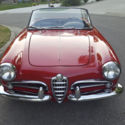 1962 Alfa Romeo Giulietta Spider Normale
1962 Alfa Romeo Giulietta Spider Normale
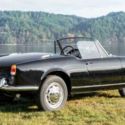 Alfa Romeo 1962 Giulietta 101 Normale Spider
Alfa Romeo 1962 Giulietta 101 Normale Spider
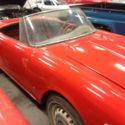 1962 Alfa Romeo Giulietta Spider Normale 750/101
1962 Alfa Romeo Giulietta Spider Normale 750/101
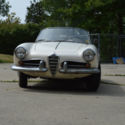 1960 Alfa Romeo Giulietta Spider Normale
1960 Alfa Romeo Giulietta Spider Normale
 1958 Alfa Romeo Spider Normale 750 D series EXCELLENT SOLID RESTORATION PROJECT
1958 Alfa Romeo Spider Normale 750 D series EXCELLENT SOLID RESTORATION PROJECT
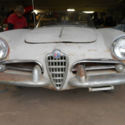 1962 Alfa Romeo Giulietta Spider Normale 1300cc 101 Series
1962 Alfa Romeo Giulietta Spider Normale 1300cc 101 Series
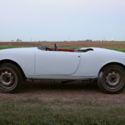 1958 Alfa Romeo Giulietta Normale Numbers Matching Engine
1958 Alfa Romeo Giulietta Normale Numbers Matching Engine
 1958 ALFA 750 GIULIETTA SPIDER NORMALE VINTAGE RACE CAR PROJECT
1958 ALFA 750 GIULIETTA SPIDER NORMALE VINTAGE RACE CAR PROJECT
 1962 Alfa Romeo Giulietta Spider Normale
1962 Alfa Romeo Giulietta Spider Normale
Year: 1962
 Alfa Romeo 1962 Giulietta 101 Normale Spider
Alfa Romeo 1962 Giulietta 101 Normale Spider
Year: 1962
 1962 Alfa Romeo Giulietta Spider Normale 750/101
1962 Alfa Romeo Giulietta Spider Normale 750/101
Year: 1962
Mileage: 75,000
Mileage: 75,000
 1960 Alfa Romeo Giulietta Spider Normale
1960 Alfa Romeo Giulietta Spider Normale
Year: 1960
Mileage: 56,102
Mileage: 56,102
 1958 Alfa Romeo Spider Normale 750 D series EXCELLENT SOLID RESTORATION PROJECT
1958 Alfa Romeo Spider Normale 750 D series EXCELLENT SOLID RESTORATION PROJECT
Year: 1958
Mileage: 53722
Mileage: 53722
 1962 Alfa Romeo Giulietta Spider Normale 1300cc 101 Series
1962 Alfa Romeo Giulietta Spider Normale 1300cc 101 Series
Year: 1962
Mileage: 62,304
Mileage: 62,304
 1958 Alfa Romeo Giulietta Normale Numbers Matching Engine
1958 Alfa Romeo Giulietta Normale Numbers Matching Engine
Year: 1958
Mileage: 99,999
Mileage: 99,999
 1958 ALFA 750 GIULIETTA SPIDER NORMALE VINTAGE RACE CAR PROJECT
1958 ALFA 750 GIULIETTA SPIDER NORMALE VINTAGE RACE CAR PROJECT
Year: 1958
Mileage: 999,999
Mileage: 999,999












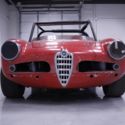 1958 Alfa Romeo Giulietta Spider Normale Racecar
1958 Alfa Romeo Giulietta Spider Normale Racecar
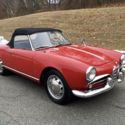 1958 Alfa Romeo Giulietta Spider Normale with a Veloce Spec Engine
1958 Alfa Romeo Giulietta Spider Normale with a Veloce Spec Engine